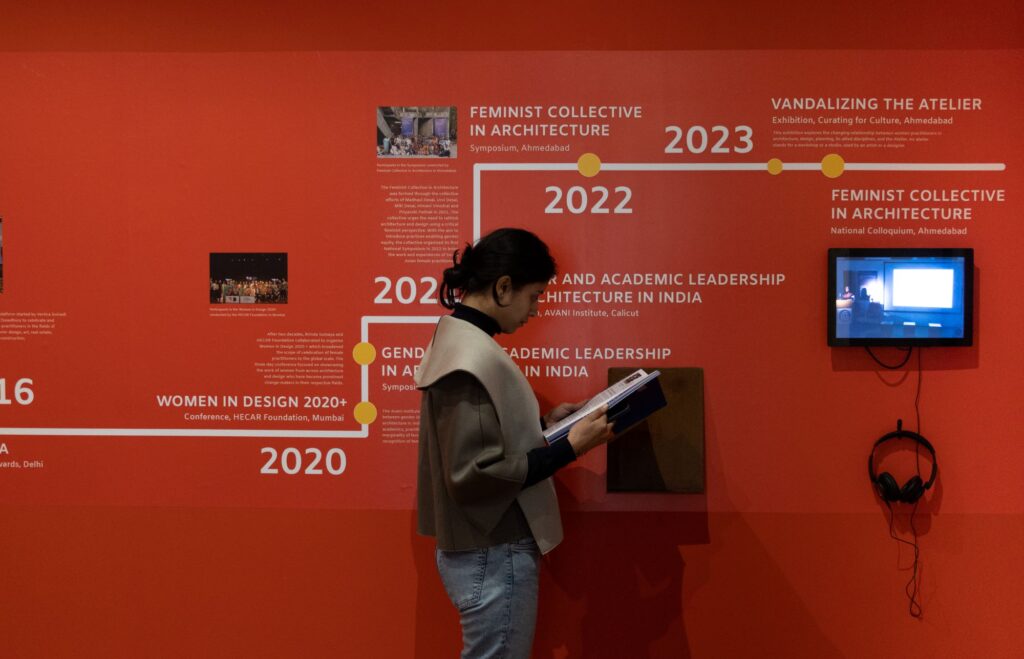
Women have been in the construction industry—from architects to contractors, engineers to masons since pre-independence, making invaluable contributions. In a field long dominated by men, they have striven to create their place. Even though women make up nearly half of the construction workforce in the country and are an inseparable part of the building process, they are often rendered invisible. To what extent is it the role of the architect to ensure equity in and beyond their studios?
Despite constituting 60% of the students in architecture schools, there is a mere 20% representation of women (less than one percent of visible representation of trans-people and non-binary people) in the practice of architecture today.
Gender Parity: Architecture Profession in Post-Binary India, a survey conducted by ArchitectureLive!
From creating leadership positions for women to ensuring equal pay and upskilling of female construction workers, several architectural practices have been constantly making efforts to create a more equitable and ethical work environment. The ongoing India Art, Architecture, and Design Biennale at the Red Fort, organised by the Ministry of Culture, takes a powerful stance on women empowerment through one of the seven exhibitions ‘Samatva – Shaping the Built’. Curated by Swati Janu with the Social Design Collaborative team, the exhibition honours the works of 80 women architects from across the country. The showcase of their exemplary work also underlines a plethora of stories—of individual journeys, struggles, victories, and most importantly the ethics of their practices.
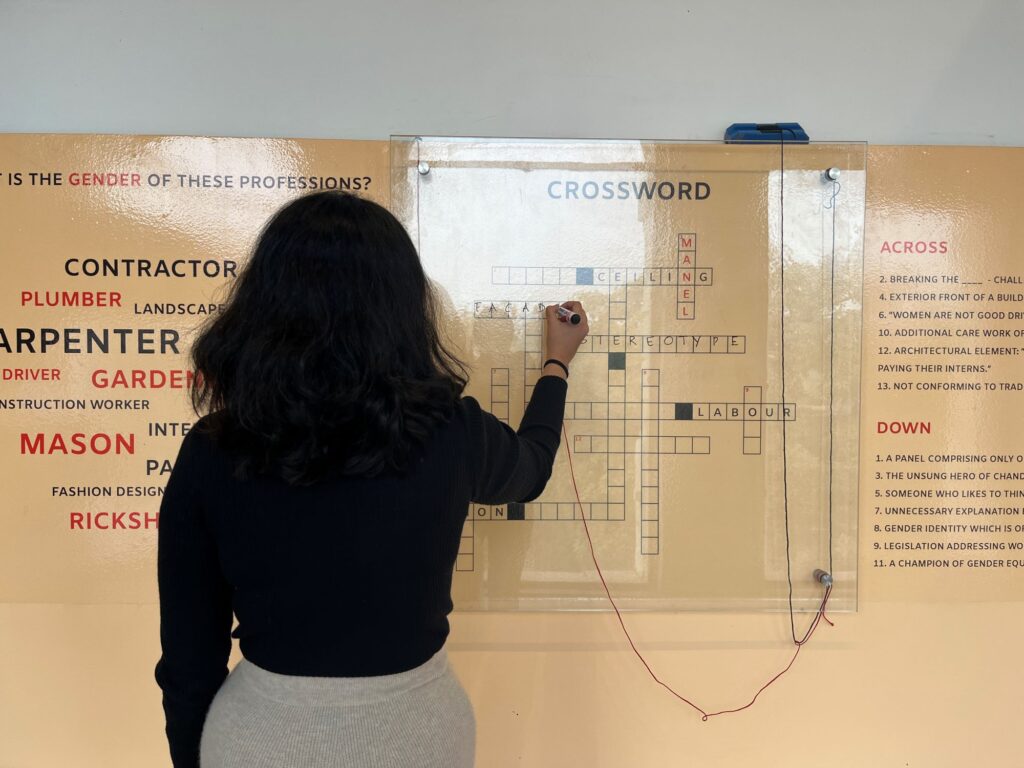
The biennale—both the showcase and the resulting conversations—aims to add to past feminist efforts in architecture in India urging for better leadership in architectural practices going ahead. A historic timeline co-curated with Madhavi Desai, emphasises the importance of collective efforts since 1991, which have helped create platforms for women designers in the country. The very notion of feminist leadership challenges the structure of significant systems and institutions such as the Council of Architecture and Indian Institute of Architects. The provocations that emerge here are about adequate representation of women, non-binary and trans persons, not only on-ground but also in boardrooms. For example, the absence of female leadership in the history of CoA’s appointment of presidents compels us to ask—who are being consistently excluded from decision-making positions?
“Adopting gender inclusivity in a workspace takes effort and empathy towards the other gender – which takes time, so the easy way out is usually ignoring it.”
Shreya Khandekar, Leewardists, in her conversation with ArchitectureLive!’s Gender Parity Survey team
Therefore, it becomes vital to acknowledge the firms who have implemented affirmative action as part of their core values. The efforts of SJK Architects, Morphogenesis, SNK Consultants, DesignAware among others have shown the need to refocus our collective attention of cultivating a support system for employees which includes benefits like equal pay, provision of maternity and menstrual leaves, organising flexible work schedules, and finally the protection and safety of the employees by institutionalising policies related to POSH (Prevention of Sexual Harassment) and ICC Committees.

But, any understanding of the architectural profession would be incomplete without exploring its relationship with the construction industry. The tight-knit relationship between architects and construction workers is also an important indicator of changing leadership goals. Hannah Broatch’s work is an excellent example of collaboration with construction workers to build a labour housing colony for improved living conditions on site. Given all the efforts undertaken to enhance the working conditions of construction workers on site, it raises an important question—how can feminist leadership extend beyond the physical site to a systemic level?
Many such questions were raised through the interactive elements at the exhibition corridors, prompting the audience to understand the gendered experiences prevalent in the industry, during the Samatva exhibition. Workshops during the inaugural week by Delhi based research organisation, Sehreeti, brought out the urgent need for empowerment of ‘invisible women’ i.e our construction workers. As per their data, the construction sector contributes about 9% to GDP with unskilled informal labour constituting over 80% of the workforce. Female workforce participation in this sector ranges between 35-50%, yet this segment remains at the very bottom of the rung. It has been reported by Sehreeti that most female construction workers are commonly underpaid despite longer working hours i.e 17 hours. While upskilling women labour is an important step towards upward mobility into leadership roles, this alone cannot guarantee better jobs and income. Policies must also safeguard construction workers through improved wages, income security and better working conditions.
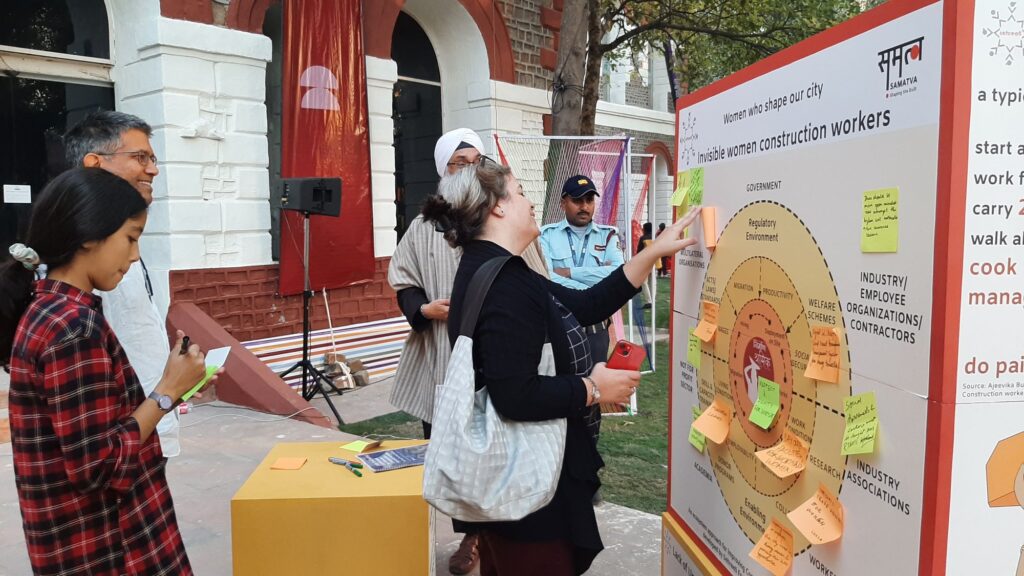
A weeklong series of ‘Living Room Conversations’ with some of the showcased architects during the inaugural week, further highlighted the steps taken by individual practices in addressing these issues. It is notable that in addressing the current gap many firms have found solutions for better working conditions on their sites. For example, Brinda Somaya (SNK Consultants) ensures the provision of creche facilities for construction workers on their projects. While many other emerging practices like Masons Ink and DesignAware are ensuring the upskilling of construction workers which is a fundamental concern.
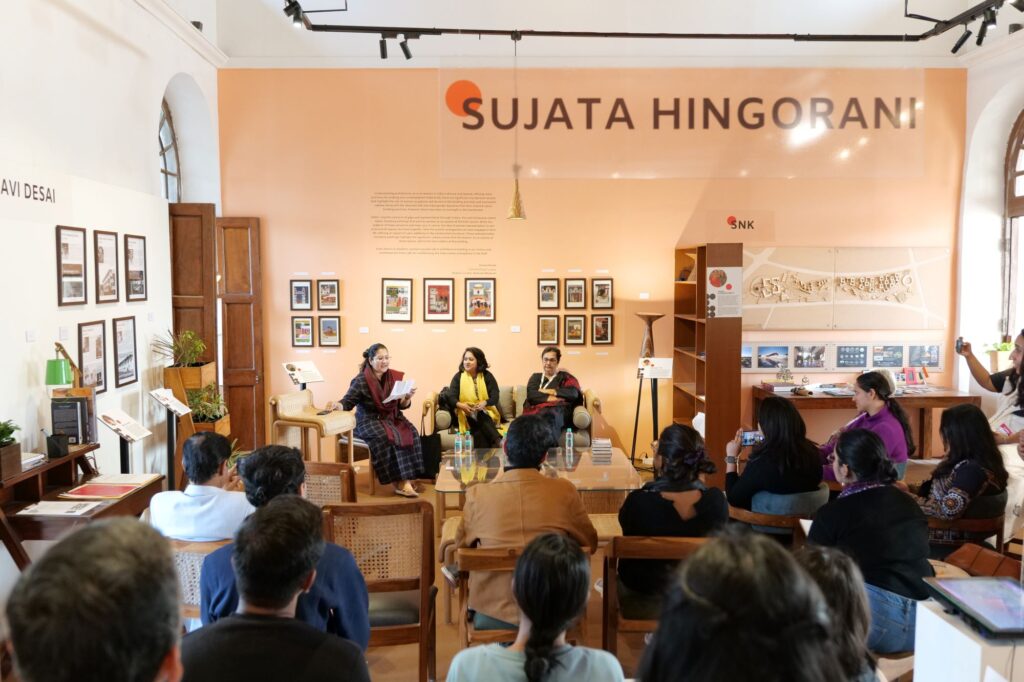
“When you talk about sustainability in architecture, it is also important to look at the macro level and intangible impacts a project can create. With the help of our client for the ‘Hobbit House’, we were able to skill up a team of about 20 women farm labourers in specialised techniques such as low carbon plasters, cob, bamboo construction and earth bag construction which turned into a long term goal of helping them become self-sufficient in the future.”
Sridevi & Rosie, Masons Ink
“In our design-and-build projects, we consult with the carpenters, fabricators and masons on our team by involving them in the decision making process as collaborators rather than giving them instructions or orders. In the execution of experimental designs, it’s important to find different ways of fabricating or implementing the design. We believe this is the true meaning of Indian jugaad. And because they’re quick to learn, we were able to devise ways of upskilling workers on our team through the use of their own smartphones and other low-tech devices.”
Takbir Fatima, DesignAware
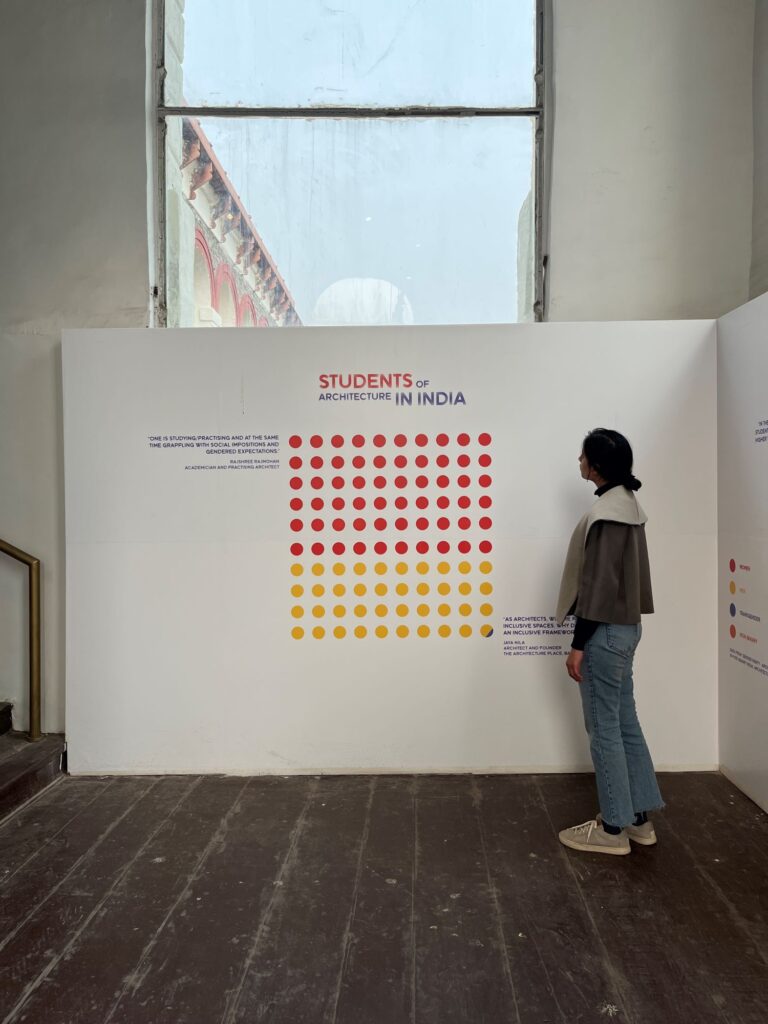
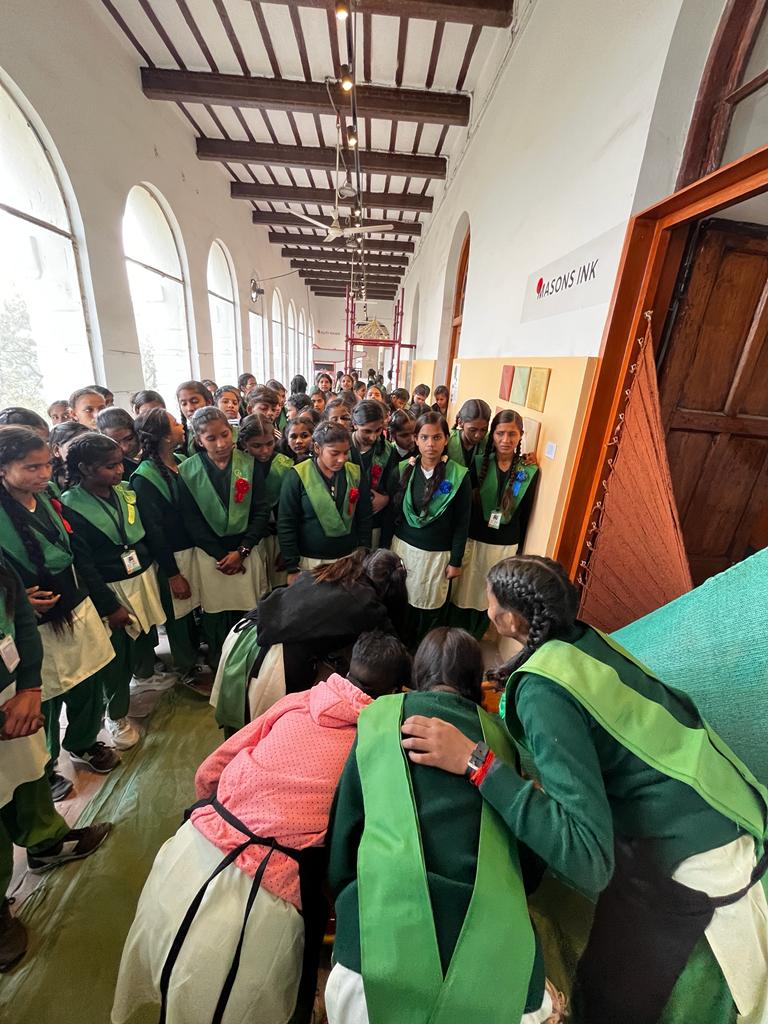
As upskilling and co-creation gain importance, what stands out because of these feminist practices is the importance of nurturing sensitive and able designers who can lead by example. Such ethical practices inspire the incorporation of affirmative change to bring gender parity. Going ahead, how must we support these examples to become industry norms, is the kind of question we should hope to raise and answer.
The Biennale is on till 31st March at the Red Fort, Delhi. Rushali Rohira and Shreya Rajmane are a part of the curatorial team at Social Design Collaborative for the exhibition ‘Samatva – Shaping the Built’.
Rushali Rohira is a sociologist deeply interested in urban issues of housing, gender, public transportation and health.
Shreya Rajmane is an architect with a keen interest in studying urban ecologies through participatory modes of planning and design.



